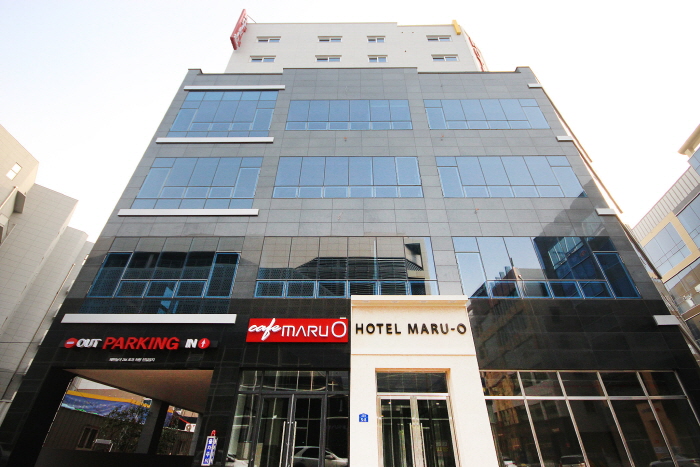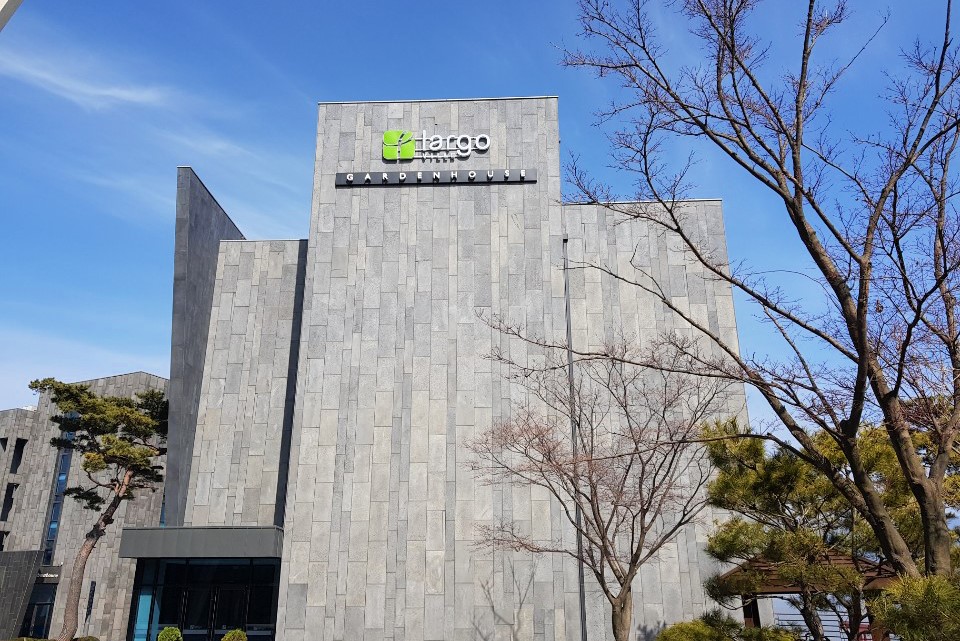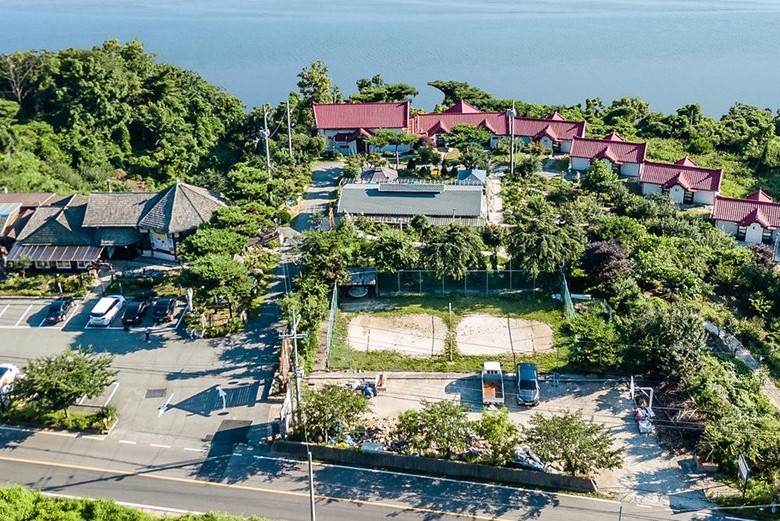Bukyungdang [Korea Quality] / 부경당 [한국관광 품질인증]
2024-04-07
99-5, Hanji-gil, Wansan-gu, Jeonju-si, Jeonbuk-do
+82-10-5327-8736
Located at the heart of the Jeongju Hanok Village, Bugyeongdang is a beautiful traditional 60-year old Hanok.
Traditional floor, roof tiles, and jar stands next to stone walls, while small garden and flower beds reflect the architect couple's attentive hands. As a Hanok with one of the prettiest gardens in Jeonju Hanok Village, it is a good place to appreciate the garden flowers and enjoy the unique laid-back atmosphere of Hanok while sitting on the floor. The place is close to major tourist attractions including Imokdae, Gyeonggijeon, Jeondong Catholic Cathedral, and Hyanggyo.
The owner, who was born and raised in the Jeonju Hanok Village, describes must-go sites like a tour guide and introduces undiscovered great restaurants or things-to-do to the guests. As the owner, who had long been engaged in architecture, takes care of the Hanok, the building always stays clean and in good condition.
In the shared kitchenette, guests can prepare simple breakfast for themselves with the dishes and cups made by the wife of the owner herself. Luggage storage services before check-in and after check-out, and description of tourist attractions are provided.
Maru-O (마루오)
2025-07-18
5-8, Baemet 3-gil, Naju-si, Jeollanam-do
Maru-O is a business hotel in the heart of Naju Innovation City, Jeollanam-do, that has good facilities and is popular with both business travellers and tourists. The underground parking lot has an electric vehicle charging station, and both mobile phone chargers and tourist information for Naju and Jeonam is available at the front desk. Right in front of the hotel is Bitgaram Lake Park where visitors can take a pleasant walk. Naju KTX station and the Intercity Bus Terminal are 15 minutes away by car, and Naju’s Yeongsanpo Hongeo Street and Gomtang Street (famous for its restaurants!) are also nearby.
Largoville Resort (Wave House, Garden House) (라르고빌리조트(웨이브하우스, 가든하우스))
2025-07-10
27, Haeannam-ro 2845beon-gil, Ganghwa-gun, Incheon
Largo Ville Wave House is a hotel-type accommodation recently opened in 2014 in the largo ville resort district of the Ganghwado, Incheon. There are two buildings, Wave House and Garden House, with six types of rooms including Superior, Premier, Standard, and Suites. Compared to the largo ville resort with kitchenette, the Wave House is characterized by cozier interior which renders itself more suitable for couples rather than families. While all the rooms face the sea, the Superior Spa Room boasts a whirlpool bathtub, which is not found in other rooms of the entire largo ville. The spa room, with its full-length window, offers a view of the West Sea to relieve stress.
Facilities include an outdoor swimming pool, Ocean Pool; a restaurant, The Wave; a cafe, largo; an outdoor grassy square; and ballrooms in each building. The Cafe largo has a green grassy square in its front yard and provides a great view of the sea, attracting dating couples looking for a nice course for a walk. Furthermore, unique menus such as potted plant ice cream and cloud latte draw attention. For breakfast, guests can choose to enjoy either Korean food at The Wave, the restaurant in the resort, or morning coffee combo at the Cafe largo.
L House [Korea Quality] / 엘하우스(L House) [한국관광 품질인증]
2020-12-10
36, Yangcheon-ro 14-gil, Gangseo-gu, Seoul
+82-10-3007-8092
L House, located near Gimpo Airport, is a guest house exclusive for foreigners. It is adjacent to Gaehwasan Station of Subway Line No. 5 which is just one station away from Gimpo Airport Station. Thus, it can be used comfortably by airline travelers. With friendly customer service and neat facilities, the place is registered as a Super Host Lodging Facility in Airbnb.
It is a good place to stay like a local as the place is in a residential area near markets and marts. The white-tone interior and vintage furniture of L House positioned on the second floor of an independent house give a spacious and neat impression. There are two bedrooms in L House. The main room is furnished with a Queen-size bed and a sofa bed to accommodate maximum 6 persons. It also has good kitchen facility composed of a table, sink, induction, toaster, microwave, rice cooker, and kitchen utensils.
A subway station and a bus stop are located a 5-minute walk from the place, making it easy to go to Hongik University, Ewha Woman’s University, Hapjeong, and others. Many parks for recreation such as the Sky Park, Noeul Park, Nanji Hangang Park, and Mangwon Hangang Park are 15 minutes away by car.
Mok hyang jae / 목향재
2025-03-05
33, Mannam-ro 6-gil, Sejong-si
+82-10-8666-1217
Mokhyangjae, which literally means a ’house with tree fragrance,’ is a traditional Korean pension house which stands alone beside a boulevard surrounded by apartment complexes. Entering the garden with a low fence, you will be greeted by the antique two-story Korean style building. The building of Mokhyangjae was built in the style of a palace with red pine tree used for the crossbeam and pillars. With a feeling of magnificence and coziness at the same time, the rafter ceiling shows the wood grain and the sliding door pasted with traditional Korean paper adds to the flavor of the traditional Korean style house.
The rooms are composed of the traditional Ondol Room where one or two persons can stay; the Ordinary Room is equipped with a bedroom and an attic; and the Deluxe Room has a wide traditional Ondol room for guests from solo travelers to families. The bedroom and the living room also have traditional display cupboard and heavy hardwood table which had been used by the owner of the house, adding to the flavor of the traditional Korean style house. Equipped with cartoons and picture books, the attic is a favorite place of children. Scattered with stepping stones, the front yard of the house is filled with Sansuyu, magnolia, and cherry trees that blossom in spring.
Mokhyangjae is running a traditional teahouse as well. The teahouse was opened thanks to the Chinese husband who enjoys tea, and most of the teas are imported from China. You can have a taste of dozens of kinds of teas including puer tea and red tea, along with a simple tea confectionery.
The Beautiful House With Sunset (노을내리는아름다운집)
2025-10-23
993, Samsannam-ro, Ganghwa-gun, Incheon
The Beautiful House with the Glow of Sunset, located on Seokmodo Island of Ganghwa-gun, is a pension where you can appreciate the beautiful sunset in a quiet room. All its rooms have an ocean view. The pension opened in 2000, and the last episode of “The Baby Book of GOD,” an entertainment program of MBC, was filmed at this place.
The interior of all rooms is made of logs and hardwood furniture to have a snug and cozy atmosphere. You can relax by looking at the sea all day long in a room rich in the smell of trees, or you can appreciate the setting sun on the terrace attached to each room. ‘CASAMIA SUNSET,’ a cafe run by the pension, is also a good place to see the sea and the setting sun. On a clear day, you can enjoy the scenery of the West Sea while sitting leisurely at the table on the outdoor deck of the cafe.
The highlight of The Beautiful House with the Glow of Sunset is the outdoor BBQ place with an ocean view and the Sunset Garden. You can have a special experience enjoying BBQ while the sun sets beyond the sea. There is also an indoor BBQ place with a wide table and a fireplace; thus, it is possible to enjoy BBQ regardless of season and weather. The Sunset Garden is a wild flower garden tended by the owner of the pension who planted the seedlings himself. Different wild flowers bloom and fall off each season, and there are fruit trees, too. Handmade fruit syrups made with the fruits picked in the garden such as plum and quince are used for the beverage served in the café, of the side dishes to be eaten with Assorted BBQ.
Walking along the marine promenade from the Sunset Garden, you will soon get to the beach and the vast mud flat where you can enjoy the charm of the West Sea which shows a varied landscape by the alternation of ebb and flood. If you carry a tool, you can experience the tideland catching clams and crabs. The Seokmodo Mineral Hot Spring, which opened in January of 2017, is frequented by travelers who like to bathe in hot springs.
Dan Kyung [Korea Quality] / 단경 [한국관광 품질인증]
2024-04-07
99, Hanji-gil, Wansan-gu, Jeonju-si, Jeonbuk-do
+82-10-5304-4380
Beginning of brightness that is what Hanok Guesthouse Dankyung means. The name reflects the politeness and consideration of the people of Jeonju. It also carries the wish for the guests of the guesthouse to become polite and considerate as well.
Since it was built in June 1943, Dankyung has kept its original form intact through the turbulent period of Korea's liberation from Japanese colonization, Korean War, and modernization. Despite the traditional form, the approximately 70-year-old Hanok is convenient to use and is beautiful in shape, emitting its beauty and gracefulness to the visitors of Jeonju Hanok Village. Anyone staying in Dankyung will feel as if he/she has become a noble man/woman of old Korea.
The white birch garden at the entrance, maple tree, and apricot flower tree in the yard create a seasonal atmosphere. Dansil, Hyangsil, and Gyeongsil of the main building and Byeolsil and Dasil of the separate building are equipped with a wooden floor, giving off a delicate wood scent. The gallery opposite the garden displays artworks and provides a space for guests to have breakfast or drink coffee or tea. The rooftop of the gallery is a special place for guests so that they can enjoy an uninterrupted view of Jeonju Hanok Village over drinks.
Gaeunchae 2 (가은채2)
2025-07-18
100-20, Hanji-gil, Wansan-gu, Jeonju-si, Jeonbuk-do
Gaeunchae 2 is the sister hanok of Gaeunchae in Jeonju Hanok Village, Jeonbuk-do. It’s a traditional red clay-walled hanok with ondol underfloor heating, exposed roof beams and hanji wallpaper and flooring - creating a beautiful and distinctive hanok interior. It has a small hallway which is good for storing luggage or just to sit and chat. In the garden are sculpted stone lanterns and tigers. Local attractions such as Jeondong Cathedral and Gyeonggijeon Shrine are a short walk away.
Gaeunchae (가은채)
2025-07-18
68-13, Hanji-gil, Wansan-gu, Jeonju-si, Jeonbuk-do
Gaeunchae is a hanok stay in Jeonju Hanok Village, Jeonbuk-do, constructed of wood in the traditional way without using nails. The location is ideal for local sightseeing as it’s close to Jeonju Craft Masters Hall, the Traditional Wine Museum, Seunggwangjae (home of the last Joseon prince Yi Seok), and Dakjong Hanji Doll Workshop. The exceptionally scenic alleyways around Gaeunchae are part of a Village tour. In the yard visitors will see different types of stone used as paving or decoration: granite, mica, and other local stones, all hand-trimmed by our ancestors.
Muju Sunflower Pension&Hostel [Korea Quality] / 무주해바라기펜션호스텔 [한국관광 품질인증]
2024-04-07
129-15, Gucheondong 1-ro, Muju-gun, Jeonbuk-do
+82-10-6533-3631
Muju Sun Flower Cottage Hostel is a family-friendly rental cottage located in the Muju Gucheon-dong Tourist District. It is a great place to appreciate the beautiful, majestic scenery of Muju and refresh yourself in the midst of Gucheondong Valley's clean nature. In particular, Muju Sun Flower Cottage Hostel is adjacent to the valley located in the upstreammost part of the tourist district, fully benefiting from the goodness of the region with its great mountain and clean water. With its deck near the valley, the place is just right for spending time playing in the water during summer and looking at the scenery of the valley during spring and autumn. The herbal tea provided to the guests is brewed from the wild herbs collected and roasted by the owner and is on the house. At the cafe, guests can help themselves to the herbal tea, coffee, toast, and fried eggs for breakfast. The room names Sunflower, bellflower, daffodil, cherry flowers, etc. are easy on the ear. All rooms are heated from the floor (Ondol) and are in the color of lavender, creating a comfortable atmosphere.
![Bukyungdang [Korea Quality] / 부경당 [한국관광 품질인증]](http://tong.visitkorea.or.kr/cms/resource/29/2593529_image2_1.jpg)



![Dan Kyung [Korea Quality] / 단경 [한국관광 품질인증]](http://tong.visitkorea.or.kr/cms/resource/65/2593265_image2_1.jpg)
![Muju Sunflower Pension&Hostel [Korea Quality] / 무주해바라기펜션호스텔 [한국관광 품질인증]](http://tong.visitkorea.or.kr/cms/resource/46/2593246_image2_1.jpg)
 Español
Español
 한국어
한국어 English
English 日本語
日本語 中文(简体)
中文(简体) Deutsch
Deutsch Français
Français Русский
Русский